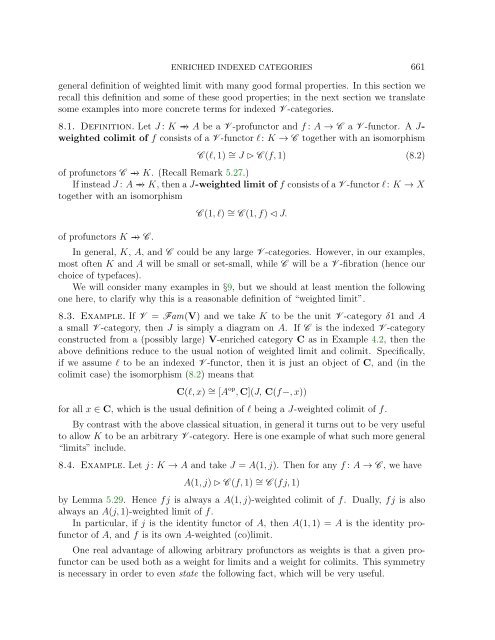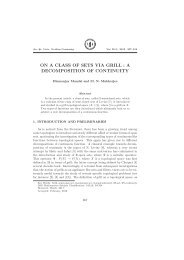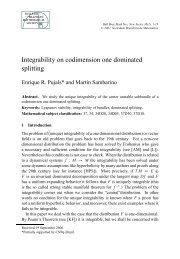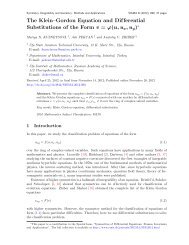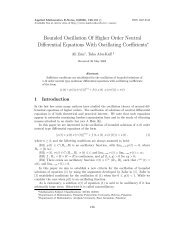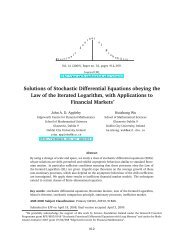ENRICHED INDEXED CATEGORIES Contents 1. Introduction
ENRICHED INDEXED CATEGORIES Contents 1. Introduction
ENRICHED INDEXED CATEGORIES Contents 1. Introduction
Create successful ePaper yourself
Turn your PDF publications into a flip-book with our unique Google optimized e-Paper software.
<strong>ENRICHED</strong> <strong>INDEXED</strong> <strong>CATEGORIES</strong> 661general definition of weighted limit with many good formal properties. In this section werecall this definition and some of these good properties; in the next section we translatesome examples into more concrete terms for indexed V -categories.8.<strong>1.</strong> Definition. Let J : K −↦−→ A be a V -profunctor and f : A → C a V -functor. A J-weighted colimit of f consists of a V -functor l: K → C together with an isomorphismC (l, 1) ∼ = J ⊲ C (f, 1) (8.2)of profunctors C −↦−→ K. (Recall Remark 5.27.)If instead J : A −↦−→ K, then a J-weighted limit of f consists of a V -functor l: K → Xtogether with an isomorphismof profunctors K −↦−→ C .C (1, l) ∼ = C (1, f) ⊳ J.In general, K, A, and C could be any large V -categories. However, in our examples,most often K and A will be small or set-small, while C will be a V -fibration (hence ourchoice of typefaces).We will consider many examples in §9, but we should at least mention the followingone here, to clarify why this is a reasonable definition of “weighted limit”.8.3. Example. If V = Fam(V) and we take K to be the unit V -category δ1 and Aa small V -category, then J is simply a diagram on A. If C is the indexed V -categoryconstructed from a (possibly large) V-enriched category C as in Example 4.2, then theabove definitions reduce to the usual notion of weighted limit and colimit. Specifically,if we assume l to be an indexed V -functor, then it is just an object of C, and (in thecolimit case) the isomorphism (8.2) means thatC(l, x) ∼ = [A op , C](J, C(f−, x))for all x ∈ C, which is the usual definition of l being a J-weighted colimit of f.By contrast with the above classical situation, in general it turns out to be very usefulto allow K to be an arbitrary V -category. Here is one example of what such more general“limits” include.8.4. Example. Let j : K → A and take J = A(1, j). Then for any f : A → C , we haveA(1, j) ⊲ C (f, 1) ∼ = C (fj, 1)by Lemma 5.29. Hence fj is always a A(1, j)-weighted colimit of f. Dually, fj is alsoalways an A(j, 1)-weighted limit of f.In particular, if j is the identity functor of A, then A(1, 1) = A is the identity profunctorof A, and f is its own A-weighted (co)limit.One real advantage of allowing arbitrary profunctors as weights is that a given profunctorcan be used both as a weight for limits and a weight for colimits. This symmetryis necessary in order to even state the following fact, which will be very useful.


